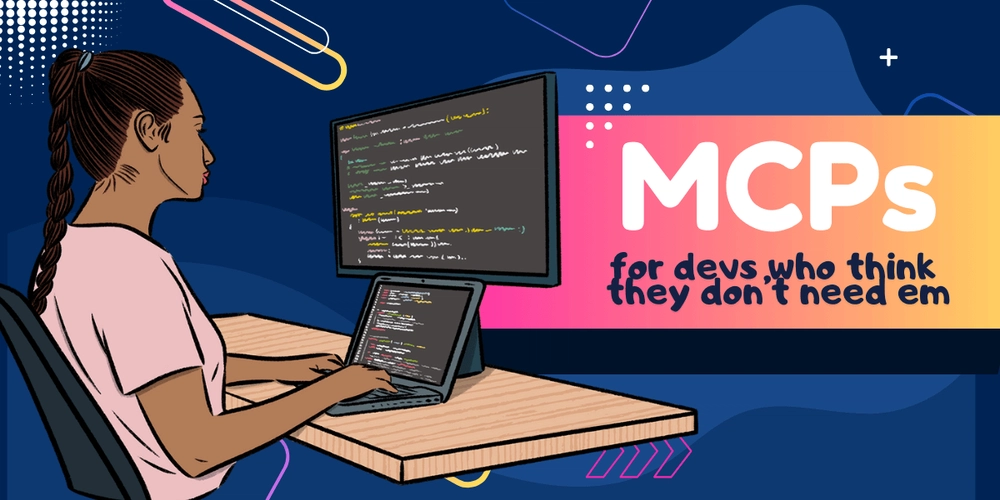Hey there! 👋
You get the basics of CSS. You can style a button and center a div (even if it takes a few tries 😉). But then you run into a layout that breaks, strange spacing issues, or a responsive design that just won’t behave. It’s frustrating!
This isn’t a deep dive into theory. This is a survival kit—a handful of simple, powerful CSS tricks that solve the problems you actually face. These are the techniques that will save you from hours of head-scratching and make your styles feel intentional, not accidental.
Let’s make your CSS work for you.
1. The “Quick Fix” for Flexbox Spacing
The Problem: You use flexbox to lay out items but then need space between them. Your first instinct is to add margin-right to every item, only to remember you have to remove it from the last one with :last-child.
The Hack: Use gap. It’s the flexbox and grid property you’ve been waiting for.
/* 🚫 The old, clunky way */
.button-container {
display: flex;
}
.button {
margin-right: 1rem;
}
.button:last-child {
margin-right: 0;
}
/* ✅ The modern, one-line solution */
.button-container {
display: flex;
gap: 1rem; /* Adds space BETWEEN all items. Done! */
}
Why it’s awesome: It handles the spacing automatically, making your code cleaner and completely removing the need for messy margin overrides.
2. Master Absolute Centering
The Problem: You’re trying to perfectly center an element with position: absolute and you end up fiddling with random top and left percentages.
The Hack: Use the transform: translate trick combined with top and left.
.centered-element {
position: absolute;
top: 50%;
left: 50%;
/* 🚫 This centers the top-left corner, not the element itself */
/* transform: translate(0, 0); */
/* ✅ This pulls the element back by 50% of its own width and height */
transform: translate(-50%, -50%);
}
Why it’s awesome: It works regardless of the element’s size. It will always be perfectly centered, both vertically and horizontally.
3. Smooth Scrolling Without JavaScript
The Problem: You want a smooth scroll when a user clicks an anchor link (like a “Back to Top” button), but you think you need JavaScript.
The Hack: One line of CSS in your html selector.
/* Add this to your global CSS file */
html {
scroll-behavior: smooth;
}
Why it’s awesome: It instantly adds elegant, smooth scrolling to all anchor links on your entire site with zero JavaScript. It’s a tiny change with a huge UX impact.
4. The CSS Variables Power Move
The Problem: You need to change a color used in multiple places. You find yourself doing a frustrating “Find and Replace” across all your CSS files.
The Hack: Define your colors (and other values) as CSS custom properties (variables) at the root.
/* 🚫 Hard to maintain */
.primary-button { background-color: #4F46E5; }
.header { color: #4F46E5; }
/* ✅ The professional way */
:root {
--primary-color: #4F46E5;
--spacing: 1rem;
}
.primary-button { background-color: var(--primary-color); }
.header { color: var(--primary-color); }
.card { margin-bottom: var(--spacing); }
Why it’s awesome: Need to change your primary color? Now you only change it in one place. It’s the foundation for theming and consistent design.
5. The Responsive Media Query Reset
The Problem: You write mobile-first CSS, but your media queries for larger screens become a long, repetitive list of max-width values.
The Hack: Use min-width and mobile-first. Start with styles for small phones, then layer on changes for larger screens.
Why it’s awesome: It’s more logical, reduces code duplication, and is the modern standard for building responsive sites.
/* ✅ Mobile-First Approach */
.card {
padding: 1rem; /* Applies to ALL screens */
margin-bottom: 1rem;
}
/* Then, only add what changes for larger screens */
@media (min-width: 768px) {
.card {
padding: 2rem; /* More padding on tablets/desktops */
}
}
@media (min-width: 1024px) {
.card {
margin-bottom: 2rem;
}
}
Why it’s awesome: It’s more logical, reduces code duplication, and is the modern standard for building responsive sites.
6. The “Box-Sizing: Border-Box” Life Saver
The Problem: You set width: 30% and add some padding, only to watch your layout break because the element’s total width is now 30% + 20px.
The Hack: Put this at the top of your CSS. It changes the math so padding and border are included inside the element’s width.
/* The best first line of your CSS */
*,
*::before,
*::after {
box-sizing: border-box;
}
Why it’s awesome: It makes layouts infinitely more predictable. When you set a width, that’s the actual width. No more mental math.



